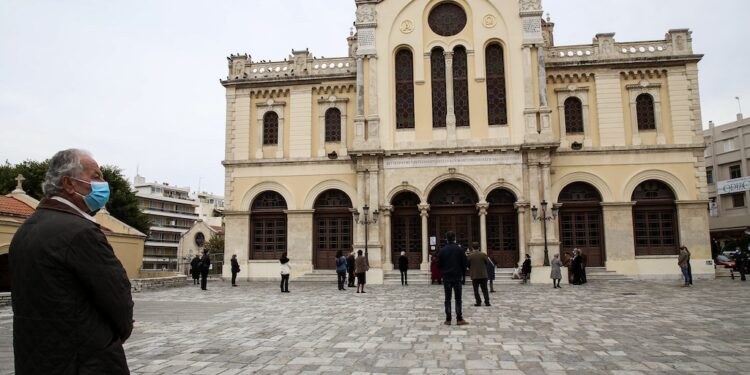How the Statute of the Church of Crete regulates the election of a New Metropolitan

Based on the provisions of the Statute of the Church of Crete, in cases of a vacant Metropolis (in this specific case, the Metropolis of Kydonia and Apokoronas after the passing of the late Metropolitan Damaskinos), it is immediately required to record and safeguard the assets and archives of the Metropolis.
The responsibility for this procedure lies with the Archdeacon or, if none is present, the General Hierarchical Commissioner, with the assistance of another clergyman and the presence of a Justice of the Peace.
At the same time, the Archbishop of Crete appoints an Administrator (in this case, Metropolitan Amphilochios of Kissamos and Selinos), who will assume the management of the essential operational matters, conduct the religious services, and, of course, lead the funeral service for the deceased.
The Administrator does not have the authority to make decisions on personnel matters or administrative issues, unless deemed absolutely necessary and approved by the Archbishop.
The Procedure for the Election of the New Metropolitan of Kydonia and Apokoronas
As stipulated in Article 21 of the Statute of the Church of Crete, the election takes place during the next regular or extraordinary session of the Holy Provincial Synod of Crete following the vacancy of the Metropolis.
The election is carried out from the list of eligible candidates for the episcopate, i.e., those who meet all the necessary qualifications to assume the position of Metropolitan.
The election is conducted by secret ballot, in a single session without interruption, at the Metropolitan Cathedral of the Archdiocese (i.e., the Holy Church of St. Minas in Heraklion), presided over by the Archbishop, with the secretary being the youngest in terms of episcopate, and the participating priest present.
For the election to be valid, a quorum must be reached, meaning that two-thirds of the members of the Holy Provincial Synod of the Church of Crete must be present. Bishops who are absent for any reason participate by sending their ballots, which are validated by the Archbishop.
The ballots contain three names from the list of eligible episcopal candidates, enclosed in a small envelope without any distinguishing marks. This envelope is then placed inside a larger one, on which the name of the respective bishop casting the vote is written.
On the day of the election process, the outer envelope is opened and destroyed in the presence of the other bishops to verify the quorum. Then, the inner envelope containing the ballot is placed into the ballot box. Afterward, the attending bishops cast their votes.
Similarly, the priests participating in the vote list three names from the list of eligible episcopal candidates for nomination, and the ballots are handed to the secretary and placed into the ballot box.
After the voting concludes, the envelopes are opened, the ballots are checked, and the names each priest voted for are announced.
Subsequently, the names of the bishops who have been elected are announced by the Archbishop, and a shortlist of three bishops, the final candidates for election, is drawn up. The Synod is then called upon to choose one of these three. The bishop who receives the most votes is elected as Metropolitan.
The voting process follows the same secret procedure throughout.
The Archbishop of Crete announces the results of the election, and the elected bishop is then invited to deliver the customary message before the Holy Provincial Synod, after which the ordination takes place.
This is then formally communicated by the President of the Holy Eparchial Synod of the Church of Crete to the Ecumenical Patriarchate and the Ministry of National Education and Religious Affairs, which, within fifteen days, issues the Presidential Decree recognising the election. This decree is then published in the Government Gazette and communicated to the Holy Eparchial Synod of Crete, which announces it to the newly ordained Metropolitan through its President.
Once all these steps are completed, the ordination of the new Metropolitan of Kydonia and Apokoronas follows.
Source: orthodoxtimes.com




